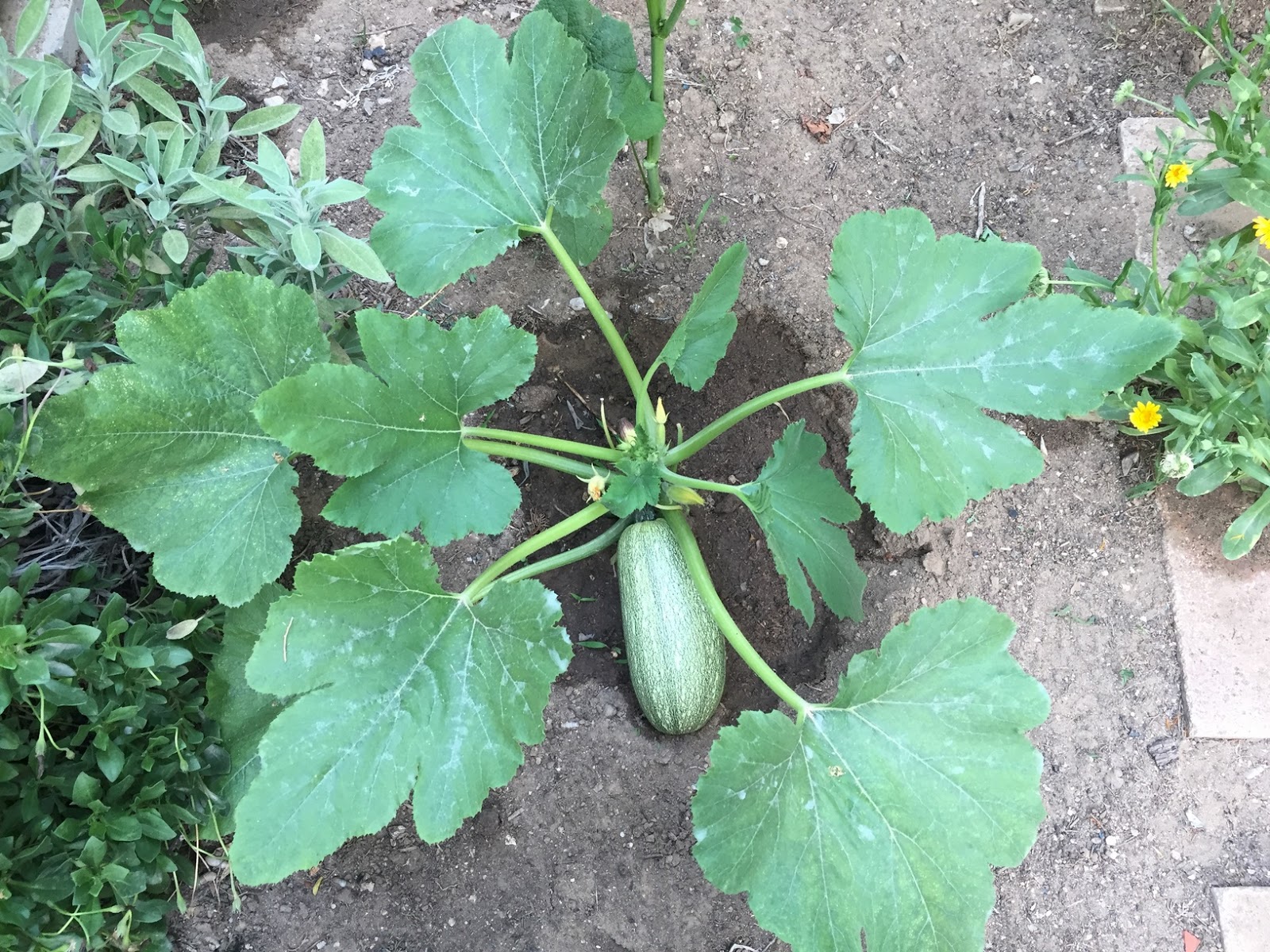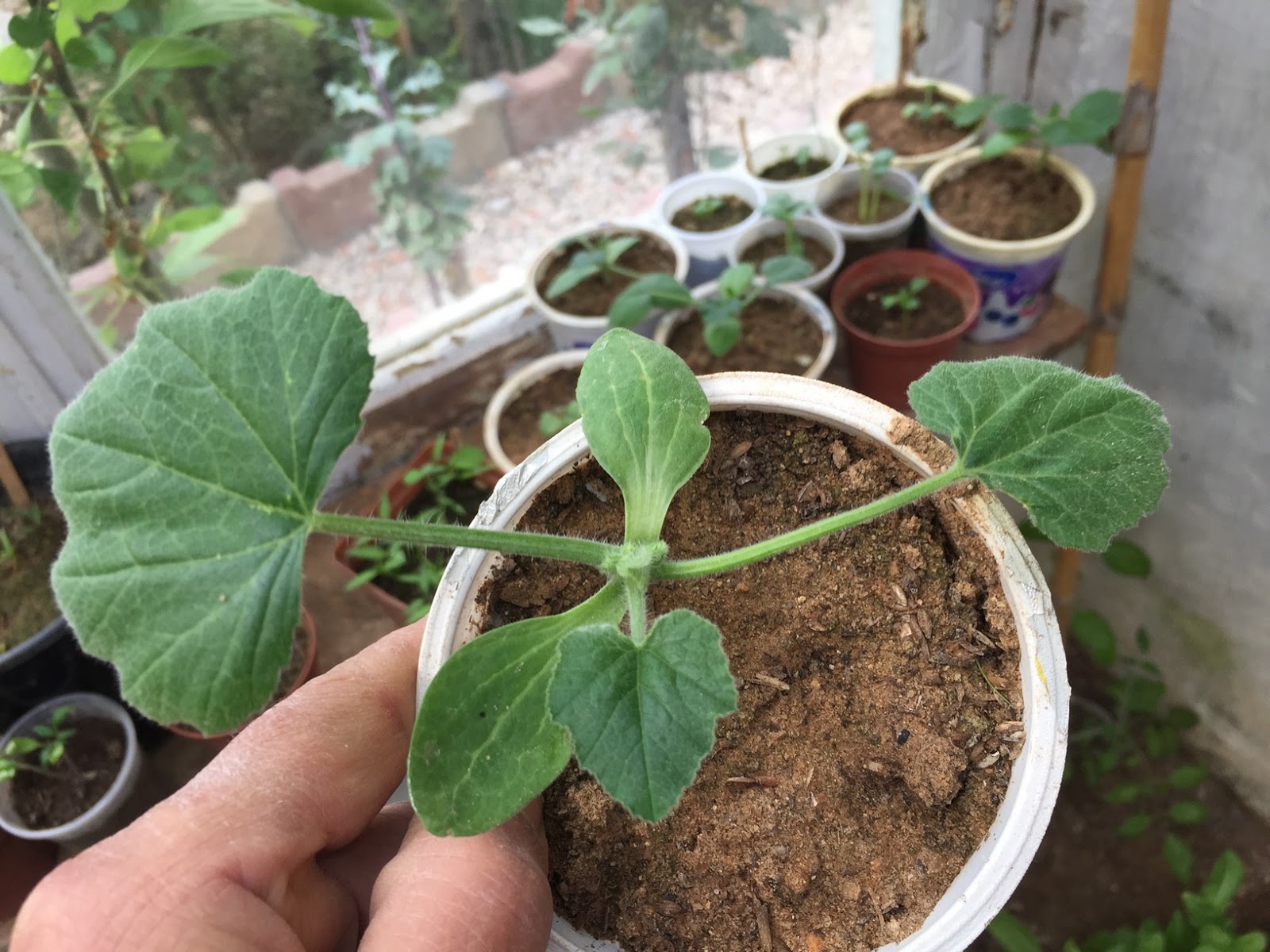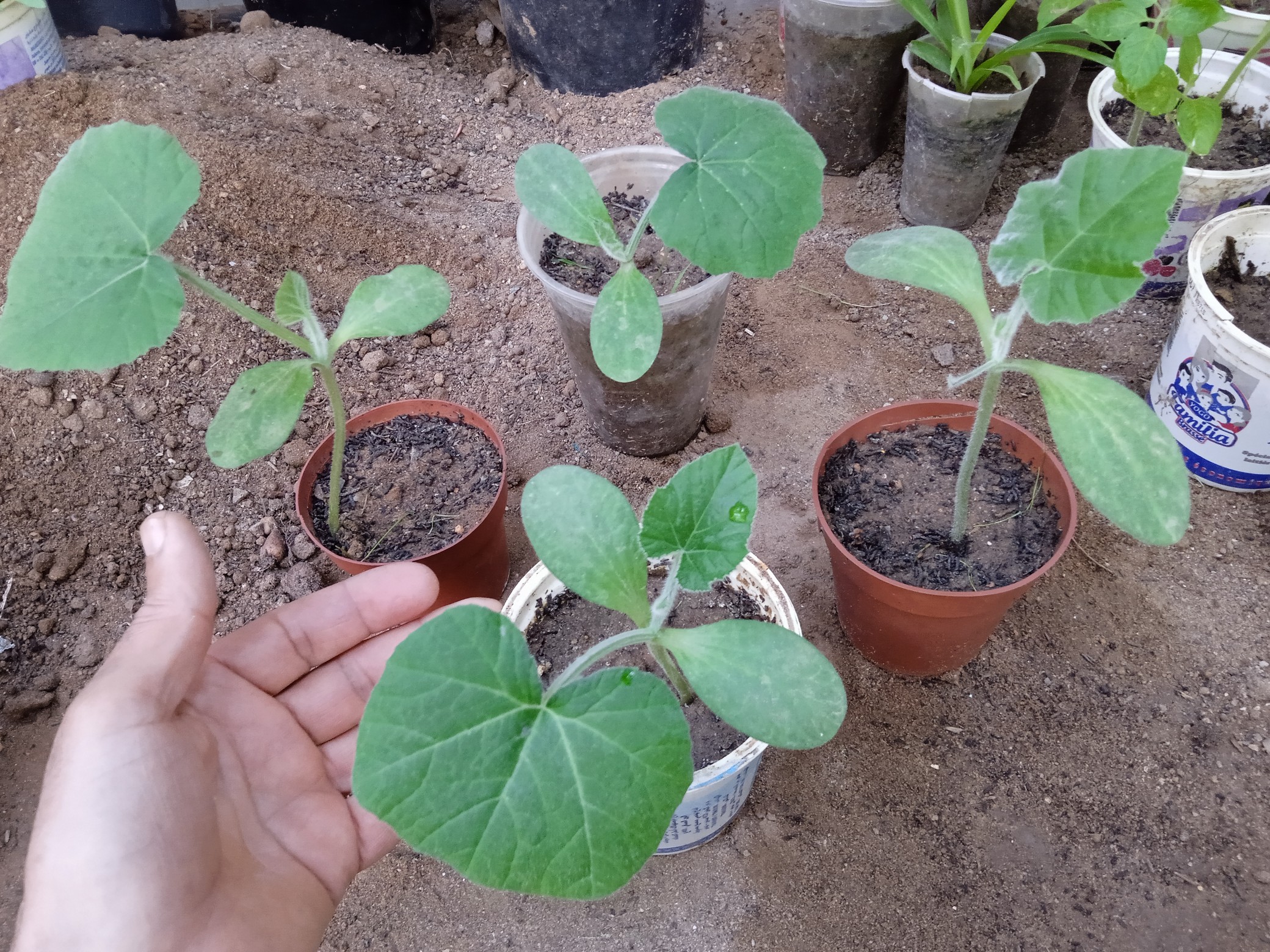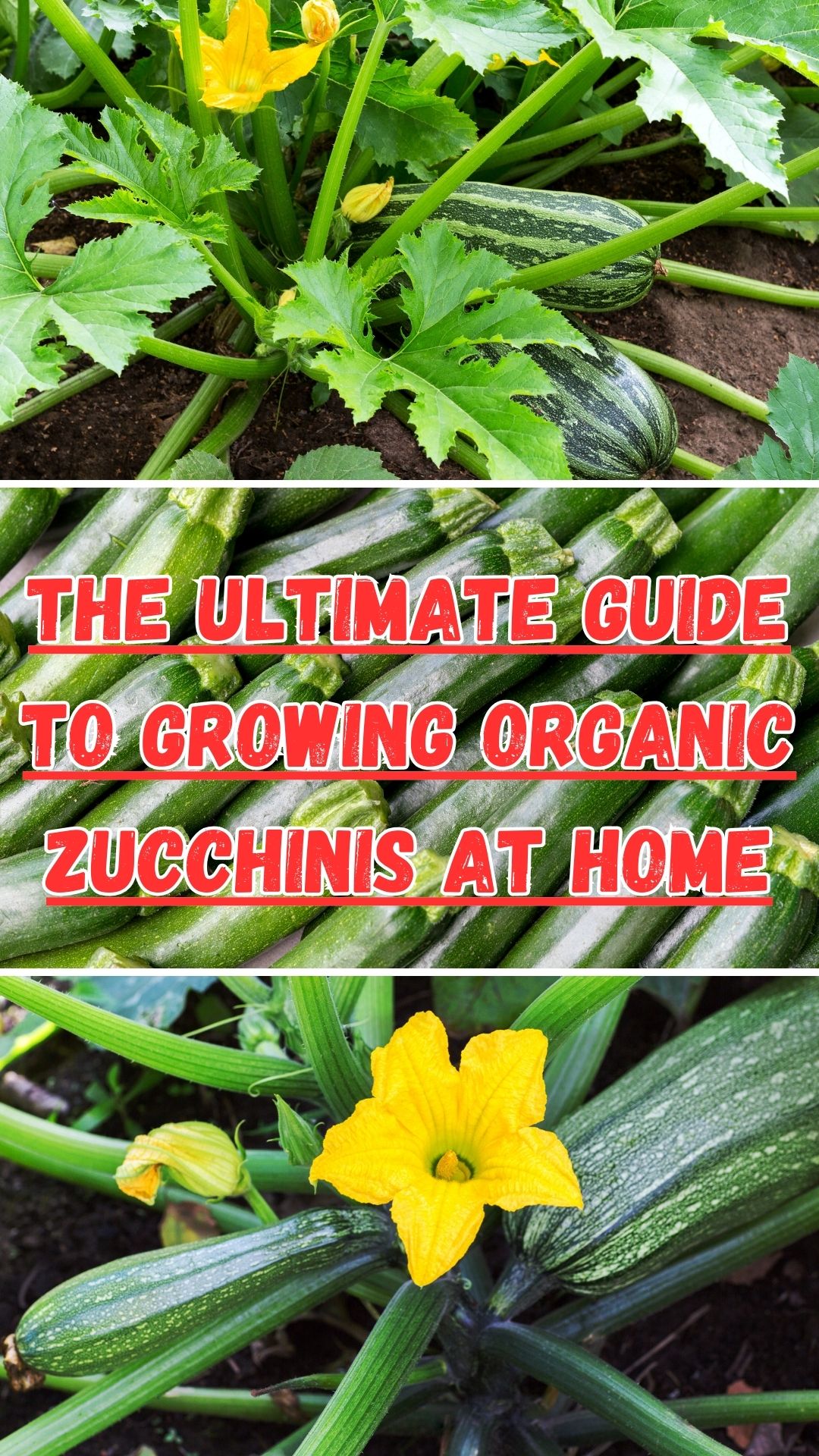In the tranquil haven of your backyard garden, a green wonder awaits - the organic zucchini. Embracing the art of growing organic zucchinis at home not only yields a delightful harvest but also brings a plethora of benefits that extend beyond the garden gates. Join us as we explore the verdant realm of organic zucchini cultivation and witness the magic of sustainable living come to life.
Brief Overview of the Benefits of Growing Organic Zucchinis at Home
Organic zucchinis, nurtured with care and free from synthetic chemicals, offer a bounty of rewards for both you and the environment:
Healthier Produce: Organic zucchinis boast a purity that comes from being grown without synthetic pesticides or fertilizers, ensuring a nutrient-rich, wholesome harvest.
Environmental Stewardship: By adopting organic gardening practices, you contribute to the preservation of biodiversity, soil fertility, and overall environmental well-being.
Superior Flavor and Nutrition: The organic zucchini's vibrant taste and nutrient density elevate your culinary creations, offering a fresh and flavorful ingredient that enhances meals.
Sustainable Lifestyle: Growing organic zucchinis at home embodies a commitment to sustainable living, reducing your carbon footprint and fostering a deeper connection to the Earth.
Importance of Organic Gardening Practices at the heart of organic zucchini cultivation lies a profound respect for nature and a dedication to nurturing the soil and plants using natural methods:
Soil Health: Organic gardening practices focus on building and maintaining healthy soil through composting, crop rotation, and minimal soil disturbance, ensuring the long-term vitality of the garden.
Chemical-Free Growing: Avoiding synthetic pesticides and fertilizers in organic gardening safeguards the health of pollinators, beneficial insects, and the ecosystem as a whole.
Sustainability: Organic gardening embodies a holistic approach to cultivation that values the interconnectedness of all living organisms, promoting harmony between humans, nature, and the environment.
Join us on this journey of organic zucchini cultivation, where a world of abundance, flavor, and sustainable harmony awaits. Let's dig deep into the fertile ground of organic gardening practices and cultivate a life-giving relationship with nature through the growth of delicious, nutrient-rich zucchinis right in your own backyard.
Choosing the Right Varieties A. Overview of Popular Organic Zucchini Varieties
Zucchini Black Beauty: This classic variety is known for its dark green skin and tender flesh, perfect for grilling or sautéing.
Golden zucchini: This variety features a vibrant yellow skin and a mild flavor, adding a colorful twist to your dishes.
Costata Romanesco: With its ribbed texture and nutty flavor, this heirloom variety is a favorite among gardeners and chefs alike.
Eight Ball zucchini: Small and round in shape, this variety is great for stuffing or slicing into rounds for a unique presentation.
Magda zucchini: Characterized by its pale green skin and creamy texture, this variety is versatile and delicious in various recipes.
Factors to Consider When Selecting Zucchini Seeds or Seedlings
Space: Consider the size of your garden or container space when choosing zucchini varieties. Some varieties may require more room to spread out.
Climate: Select zucchini varieties that are well-suited to your climate zone for optimal growth and productivity.
Disease Resistance: Look for zucchini varieties that are resistant to common diseases such as powdery mildew and bacterial wilt to ensure a successful harvest.
Yield: Consider the yield of each variety to determine how many zucchinis you will harvest per plant, especially if you have limited space or are looking to preserve excess produce.
Flavor and Texture: Choose zucchini varieties based on the flavor profile and texture you prefer in your dishes, whether you enjoy a nutty taste, a mild flavor, or a tender texture.
By considering these factors and exploring different zucchini varieties, you can select the right seeds or seedlings to grow organic zucchinis that meet your preferences and gardening conditions.
Importance of Selecting High-Quality Zucchini Seeds
Germination Rate: High-quality zucchini seeds with good genetics are more likely to germinate quickly and reliably, ensuring a higher success rate for your indoor germination efforts.
Plant Health and Vigor: Healthy seeds produce strong, robust seedlings that are better equipped to withstand environmental stresses and develop into productive zucchini plants.
Crop Quality: Superior seeds can contribute to higher crop quality, including better taste, texture, and yield of zucchinis harvested from the plants grown from those seeds.
Soil Preparation
Choosing the Right Location for Zucchini Plants
Select a sunny spot in your garden that receives at least 6-8 hours of direct sunlight daily, as zucchini plants thrive in warm, sunny conditions. Ensure good air circulation to prevent issues like powdery mildew.
Testing and Amending the Soil for Optimal Growth
Before planting your zucchini, conduct a soil test to assess its pH levels and nutrient content. Amend the soil as needed by incorporating organic matter like compost, well-rotted manure, or organic fertilizers to enhance soil fertility and structure.
Adding Compost and Organic Fertilizers
Incorporate compost into the soil to improve its texture, moisture retention, and nutrient levels. Organic fertilizers, such as composter chicken manure can provide additional nutrition for your zucchini plants without relying on synthetic chemicals.
Watch: Adding Chicken Manure to The Garden Soil and It's Benefits
Planting
Selecting Zucchini Varieties Suitable for Home Gardens:
Choose zucchini varieties that are well-suited for home gardens, considering factors like available space, climate conditions, disease resistance, and culinary preferences. Popular varieties such as Black Beauty, Golden, or Eight Ball offer a range of flavors and shapes to suit your tastes.
Timing for Planting Zucchini Seeds or Seedlings
- Plant zucchini seeds directly in the garden after the last frost date in your area, once the soil has warmed to around 60°F (15°C) for optimal germination. If starting with seedlings, transplant them carefully into the prepared soil, ensuring they have enough space to grow.
- Spacing and Depth for Planting ZucchiniPlant zucchini seeds or seedlings in well-drained soil at a spacing of 2-3 feet apart in rows, or in hills spaced 3-4 feet apart if planting multiple seeds together.
- Plant seeds at a depth of 1 inch and cover lightly with soil, ensuring they have room to grow and spread their lush foliage.
Transferring Seedlings Outdoors
Transferring zucchini seedlings from indoor conditions to the outdoor environment requires careful planning and acclimatization to prevent shock and ensure successful growth.
Watch: Expert Tips for Thinning Zucchini Seedlings the Right Way
Here is a guide on when and how to transition zucchini seedlings from indoors to outdoors, along with tips for acclimating them to their new environment:
Guide on When and How to Transition Zucchini Seedlings
Timing: Wait to transplant zucchini seedlings outdoors after the last frost date in your region. Zucchini plants are sensitive to frost and thrive in warm soil and air temperatures.
Typically, seedlings are ready for transplanting when they have developed 2-3 true leaves and are around 4-6 inches tall.
Preparation: Choose a sunny outdoor location with well-draining soil for transplanting zucchini seedlings. Prepare the soil by amending it with compost and ensuring good fertility.
Transplanting: On a cloudy day or in the late afternoon to avoid midday sun exposure, gently remove the zucchini seedlings from their containers without disturbing the roots.
Dig holes in the garden bed spaced according to the mature size of the zucchini plants and carefully plant the seedlings at the same depth as they were in the containers.
Watering and Mulching: Water the transplanted seedlings thoroughly to help them establish in the new environment. Apply a layer of organic mulch around the plants to retain soil moisture and suppress weeds.
Tips for Acclimating Seedlings to Their New Environment
Gradual Exposure: Before transplanting the seedlings directly into the garden bed, gradually introduce them to outdoor conditions by placing them outside for a few hours each day, gradually increasing exposure over a week.
Protection: Provide temporary protection from harsh sunlight, wind, and temperature fluctuations using row covers, cloches, or shading until the seedlings adjust to their new surroundings.
Monitor and Water: Keep a close eye on the transplanted seedlings, monitoring their growth and water needs. Water consistently to keep the soil evenly moist but not waterlogged during the establishment period.
Maintenance
To ensure the flourishing health of your organic zucchini plants, attentive maintenance practices are key. Dive into these essential tasks to nurture your zucchinis for vibrant growth:
Watering Requirements for Zucchini Plants: Provide consistent moisture to your zucchini plants by watering deeply and evenly, ensuring the soil remains moist but not waterlogged. Water at the base of the plants in the morning to minimize evaporation and reduce the risk of fungal diseases.
Mulching to Retain Moisture and Suppress Weeds: Mulch around your zucchini plants with organic materials like straw, grass clippings, or compost to retain soil moisture, regulate temperature, and suppress weed growth. Mulching also helps maintain soil structure and fertility throughout the growing season.
Pruning Zucchini Plants for Better Yields: Encourage productive growth and better airflow by pruning zucchini plants to remove damaged or overcrowded foliage.
Pest and Disease Management
Protect your organic zucchini patch from common adversaries through vigilant pest and disease management practices. Arm yourself with knowledge and natural remedies to safeguard your plants:
Common Pests and Diseases Affecting Zucchinis
Be on the lookout for pests such as aphids, squash bugs, and cucumber beetles, as well as diseases like powdery mildew, blossom end rot, and downy mildew, which can impact the health and productivity of your zucchini plants.
Natural and Organic Methods for Pest Control
Combat pests organically by introducing beneficial insects, hand-picking pests, spraying neem oil or insecticidal soap, and practicing crop rotation to prevent pest buildup. Implement companion planting with pest-repellent herbs and flowers to create a harmonious garden ecosystem.
Importance of Monitoring and Early Intervention
Regularly inspect your zucchini plants for signs of pests and diseases, addressing any issues promptly to prevent widespread infestations or damage. Early intervention and proactive measures can help protect the health of your zucchinis and sustain a thriving garden.
Companion Planting
Companion planting is an excellent way to maximize the health and yield of your garden. When it comes to zucchinis, several companion plants can help deter pests, attract beneficial insects, and improve soil conditions. Some plants that grow well nearby zucchinis include:
Nasturtiums: These colorful flowers can deter pests like aphids, squash bugs, and striped cucumber beetles. They also attract beneficial insects that prey on common zucchini pests.
Radishes: Planting radishes near zucchinis can help repel vine borers and rust flies, which are common pests of zucchinis.
Beans: Bush beans or pole beans can help fix nitrogen in the soil, benefiting the zucchini plants. Additionally, their upright growth can provide a natural trellis for zucchini vines.
Herbs such as dill and oregano: These herbs can attract beneficial insects and repel pests that may otherwise affect zucchinis.
Marigolds: These vibrant flowers can deter nematodes and other harmful soil-borne pests, contributing to the overall health of the garden.
By incorporating these companion plants near your zucchinis, you can create a more diverse and balanced garden ecosystem, leading to healthier zucchini plants and potentially higher yields.
Harvesting and Enjoying Your Zucchini
When to Expect Your Zucchini to Be Ready for Harvest
Zucchini plants typically start producing fruit 45-55 days after seedling transplanting. Harvest zucchinis when they are firm, moderately sized, and bright in color. Regular harvesting encourages continuous fruit production.
Ensuring the quality and quantity of zucchinis relies heavily on the proper harvesting of this popular summer vegetable. The ideal time for harvesting zucchinis is when they are young and tender, usually measuring around 6-8 inches in length and 1-2 inches in diameter. When it's time to harvest, use a sharp knife or garden shears to delicately detach the zucchini from the stem, being cautious not to harm the plant itself. Regularly inspecting your zucchini plants for ripe fruits is essential, as leaving them on the vine for too long can result in oversized and tough zucchinis. Furthermore, frequent harvesting promotes continual growth and production throughout the season.
Proper Techniques for Harvesting Zucchinis Without Damaging the Plant
Use a sharp knife or garden shears to cut the zucchinis from the plant, leaving a small portion of the stem attached.
Avoid twisting or yanking the zucchinis off the plant, as this can cause damage to the plant.
Storing Zucchinis
Store freshly harvested zucchinis in the refrigerator in a perforated plastic bag for up to one week.
Zucchinis can also be preserved by freezing, pickling, or using them in various recipes such as zucchini bread or muffins.
Troubleshooting
Recognizing and Addressing Common Issues with Zucchini Plants:
Yellowing Leaves: Yellowing leaves can indicate nutrient deficiencies, overwatering, or pests. Adjust watering schedules and fertilization to address the issue.
Wilting Plants: Wilting zucchini plants may be a sign of underwatering, root rot, or pests. Check soil moisture levels and examine the roots for rot.
Stunted Growth: Stunted growth can result from poor soil quality, inadequate sunlight, or overcrowding. Improve soil fertility, ensure proper spacing, and provide adequate sunlight.
Pest Infestations: Common pests that affect zucchini plants include aphids, squash bugs, and vine borers. Use natural pest control methods such as neem oil or handpicking to manage infestations.
B. Dealing with Problems like Blossom End Rot and Powdery Mildew
Blossom End Rot: Blossom end rot is characterized by dark, sunken spots on the blossom end of zucchinis due to calcium deficiency or fluctuations in watering. Address the issue by maintaining consistent watering and adding calcium-rich amendments to the soil.
Powdery Mildew: Powdery mildew appears as a white powdery substance on leaves, leading to leaf yellowing and eventual plant decline. Control powdery mildew by improving air circulation, avoiding overhead watering, and applying fungicidal sprays or natural remedies like milk or baking soda.
Seeking Help from Gardening Resources and Experts
Local Extension Services: Contact your local cooperative extension service for guidance on identifying and treating zucchini plant issues specific to your region.
Online Forums and Communities: Join gardening forums or online communities to seek advice and learn from experienced gardeners facing similar challenges.
Gardening Experts: Consult with gardening experts at nurseries, botanical gardens, or horticultural societies for personalized assistance and recommendations for troubleshooting zucchini plant problems.
Gardening Books and Publications: Explore gardening books, magazines, and publications for in-depth information on zucchini plant care, troubleshooting tips, and organic gardening practices.
By recognizing common issues, implementing effective solutions, and seeking help from gardening resources and experts, you can ensure the health and productivity of your organic zucchini plants throughout the growing season.
Suggestions for Using Fresh Zucchini in Delicious Recipes
Utilizing Fresh Zucchini in Recipes
Now that you have an abundance of fresh zucchini, it's time to get creative in the kitchen! Zucchinis are versatile and can be incorporated into a variety of dishes.
Here are some ideas to help you get started:
Grilled Zucchini
Ingredients:
2 medium zucchinis
2 tablespoons olive oil
2 cloves garlic, minced (optional)
Salt and pepper to taste
Fresh herbs such as thyme, rosemary, or basil (optional)
Instructions:
Preheat the grill to medium-high heat.
Wash the zucchinis and cut them into 1/4-inch thick slices lengthwise. If preferred, the zucchinis can also be cut into rounds.
In a bowl, toss the zucchini slices with olive oil, minced garlic (if using), salt, and pepper. Fresh herbs can also be added at this stage for extra flavor.
Place the zucchini slices on the preheated grill and cook for about 2-3 minutes on each side, or until they develop grill marks and are tender-crisp.
Once grilled to your preference, remove the zucchini slices from the grill and transfer them to a serving platter.
Optionally, garnish the grilled zucchini with additional fresh herbs and a drizzle of olive oil before serving.
Grilled zucchini is versatile and can be enjoyed on its own as a delightful side dish, or used in various recipes such as salads, sandwiches, or as a topping for pizzas.
Zucchini Noodles:
Zucchini Noodles with Garlic and Parmesan
Ingredients:
4 medium zucchinis
2 tablespoons olive oil
3-4 cloves garlic, minced
Salt and pepper to taste
1/4 cup grated Parmesan cheese
Fresh chopped parsley for garnish (optional)
Instructions:
Using a spiralizer, mandoline, or vegetable peeler, create zucchini noodles by cutting the zucchinis into long, thin strips resembling spaghetti.
Heat the olive oil in a large pan over medium heat. Add the minced garlic and sauté for about 1 minute until fragrant.
Add the zucchini noodles to the pan and toss them with the garlic-infused oil. Sauté for 2-3 minutes, or until the zucchini noodles are just tender but still slightly crisp.
Season the zucchini noodles with salt and pepper to taste, and then sprinkle the grated Parmesan cheese over the top.
Toss the noodles to evenly distribute the cheese and allow it to melt slightly.
Remove the pan from the heat and transfer the zucchini noodles to serving plates.
Garnish with fresh chopped parsley if desired, and serve immediately.
These zucchini noodles make a light and flavorful dish that can be enjoyed on its own or as a nutritious accompaniment to your favorite protein.
Zucchini Bread:
Ingredients:
2 cups all-purpose flour
1 teaspoon baking soda
1 teaspoon baking powder
1 teaspoon salt
1 1/2 teaspoons ground cinnamon
1/2 teaspoon ground nutmeg
2 eggs
1/2 cup vegetable oil
1 cup white sugar
1/2 cup brown sugar
2 teaspoons vanilla extract
2 cups grated zucchini
1/2 cup chopped walnuts or pecans (optional)
Instructions:
Preheat your oven to 350°F (175°C). Grease and flour two 8x4 inch loaf pans.
In a bowl, sift together the flour, baking soda, baking powder, salt, cinnamon, and nutmeg.
In a separate bowl, beat the eggs, vegetable oil, vanilla, and sugars together. Fold in the grated zucchini.
Gradually add the dry ingredients to the zucchini mixture, stirring until well combined. If desired, fold in the chopped nuts.
Divide the batter evenly between the prepared loaf pans.
Bake for 50 to 60 minutes in the preheated oven, or until a toothpick inserted into the center comes out clean.
Allow the loaves to cool in the pans for about 20 minutes before transferring them to wire racks to cool completely.
Enjoy your homemade zucchini bread as a delightful treat for breakfast or as a satisfying snack at any time of the day!
Conclusion
Congratulations on embarking on the journey of growing organic zucchinis! Gardening is a rewarding experience that connects us to nature, promotes sustainability, and yields fresh, nutritious produce for our families. Embrace the challenges and joys of tending to your zucchini plants, and savor the delicious flavors of your homegrown harvests. Your dedication to organic gardening contributes to a healthier environment and a more sustainable lifestyle. We would love to hear about your organic zucchini-growing adventures! Share your experiences, successes, challenges, and favorite tips for cultivating zucchinis organically. Together, we can inspire and support fellow gardeners in their quest for homegrown bounty and sustainable living. Join the conversation, exchange ideas, and celebrate the diverse and vibrant community of organic gardeners passionate about growing wholesome food with love and care.
Thank you for following this comprehensive guide to growing organic zucchini. May your garden flourish, your zucchinis thrive, and your culinary creations delight all who enjoy them. Happy gardening!
Here are frequently asked questions about growing zucchinis along with their answers:
How much sunlight do zucchini plants need?
Zucchini plants thrive in full sunlight, requiring at least 6-8 hours of direct sunlight per day for optimal growth and fruit production.
When is the best time to plant zucchini seeds or seedlings?
Plant zucchini seeds or seedlings outdoors after the last frost date in your area when the soil temperature has warmed to around 60°F (15°C) for successful germination and growth.
How often should I water my zucchini plants?
Water zucchini plants consistently, providing around 1-2 inches of water per week, either through regular watering or drip irrigation, ensuring the soil stays evenly moist but not waterlogged.
What are some natural ways to control pests on zucchini plants?
Use natural pest control methods such as releasing beneficial insects, handpicking pests like aphids and caterpillars, applying neem oil or insecticidal soaps, and using companion planting to deter pests.
How do I know when zucchinis are ready to harvest?
Zucchinis are ready to harvest when they reach 6-8 inches in length and have a firm texture. Harvest them regularly to encourage continuous fruit production and prevent overripe, bitter zucchinis
What is powdery mildew, and how can I prevent it on my zucchini plants?
Powdery mildew is a fungal disease that appears as a white powdery substance on leaves. Prevent powdery mildew by ensuring good air circulation, avoiding overhead watering, and treating plants with fungicidal sprays or natural remedies.
Are there any companion plants that benefit zucchini growth?
Yes, companion plants like nasturtiums, marigolds, and herbs such as basil and dill can help repel pests, attract beneficial insects, and improve soil health for better growth and productivity of zucchini plants.
How often should zucchinis be watered?
Zucchinis require consistent moisture, so aim to water them deeply about once or twice a week, depending on the weather and soil conditions.
Can zucchinis be grown in containers?
Yes, zucchinis can be grown in large containers or pots that are at least 24 inches deep and wide to accommodate their extensive root system.
What is the best way to store harvested zucchinis?
Freshly harvested zucchinis can be stored in the refrigerator in a perforated plastic bag for up to one week. They can also be preserved by freezing or pickling.
What causes blossom end rot in zucchinis?
Blossom end rot is often caused by calcium deficiency or irregular watering. Ensuring consistent soil moisture and providing adequate calcium can help prevent this issue.
How can I improve soil fertility for growing zucchinis?
Incorporating organic matter such as compost or well-rotted manure into the soil can improve its fertility and structure, providing a better environment for zucchini growth.
Pin for later!
Want to grow ZUCCHINI!
Affiliate Disclosure: In transparency and compliance with legal guidelines, please be aware that some of the links on this site are affiliate links. These are carefully chosen products that I have personally used, tested, and genuinely recommend. When you click and make a purchase through these links, I may earn a small commission, at no additional cost to you. This commission helps support the maintenance of this site, allowing me to continue providing valuable content and recommendations. Rest assured, my priority is to offer authentic and reliable information, and I only affiliate with products that align with the values and standards I uphold. Your trust means everything to me, and I appreciate your support. If you have any questions or concerns, please feel free to reach out. Thank you for being a valued part of our community!








